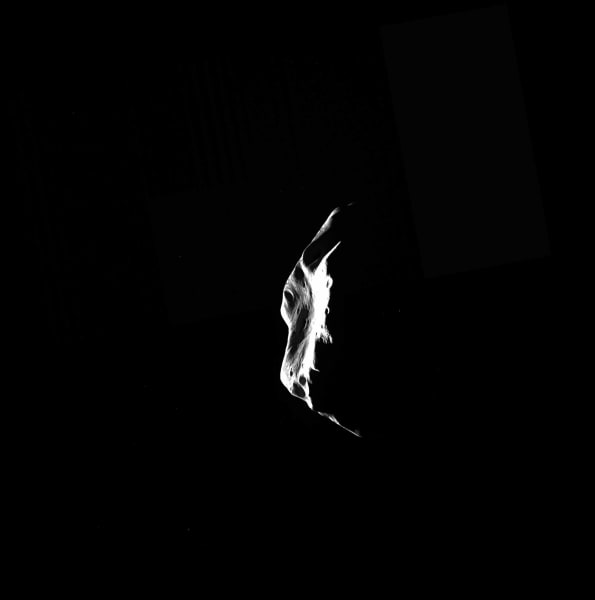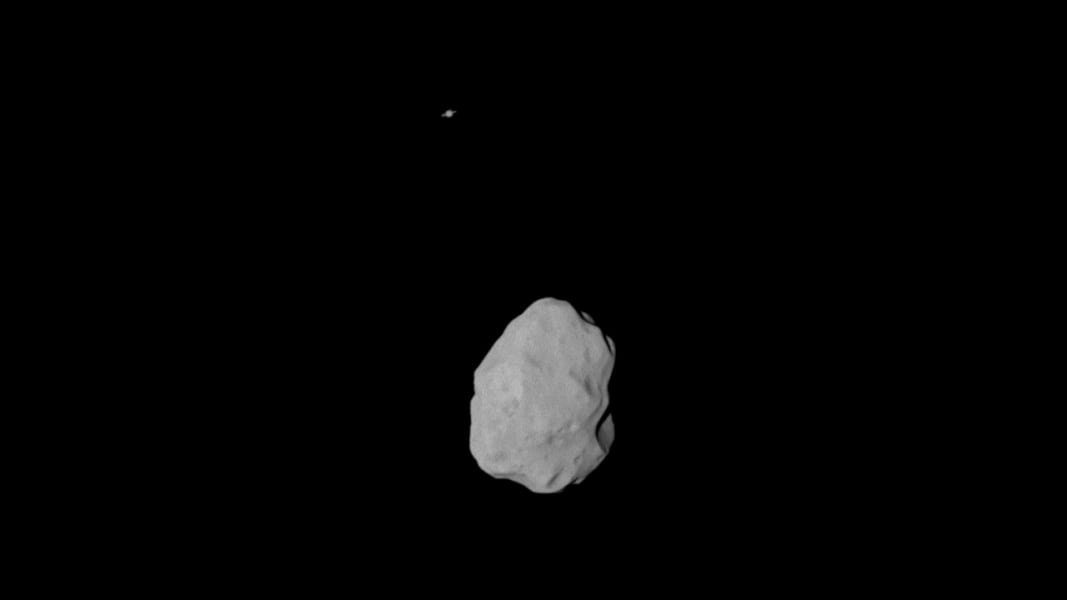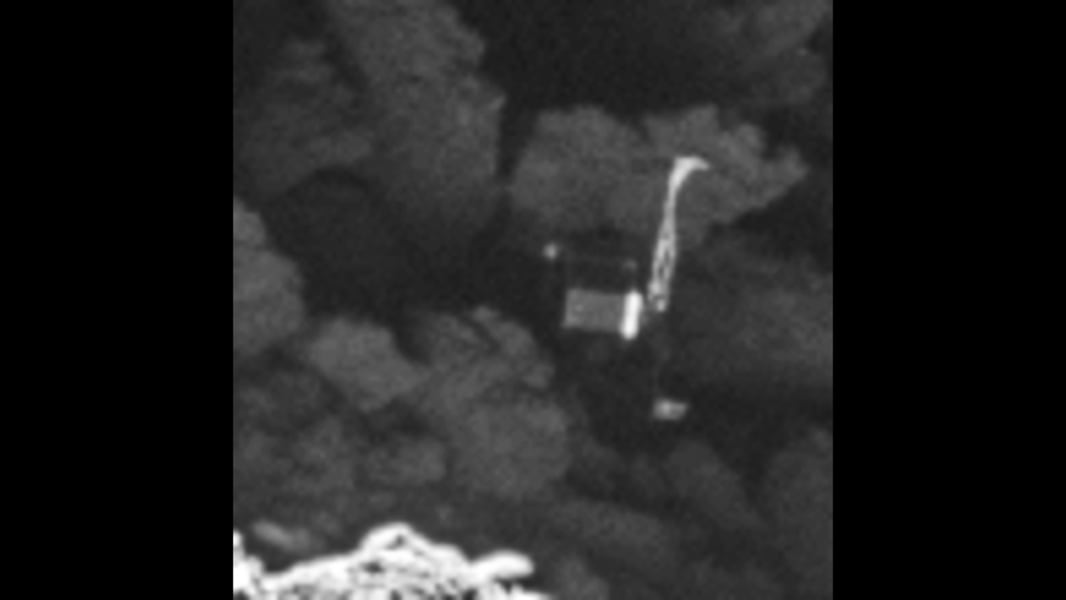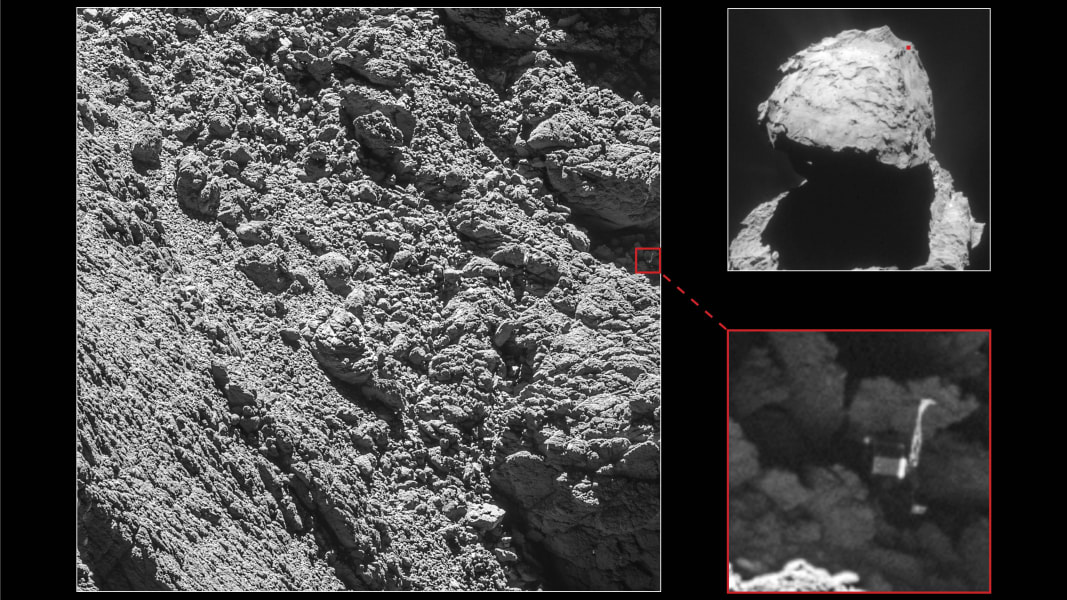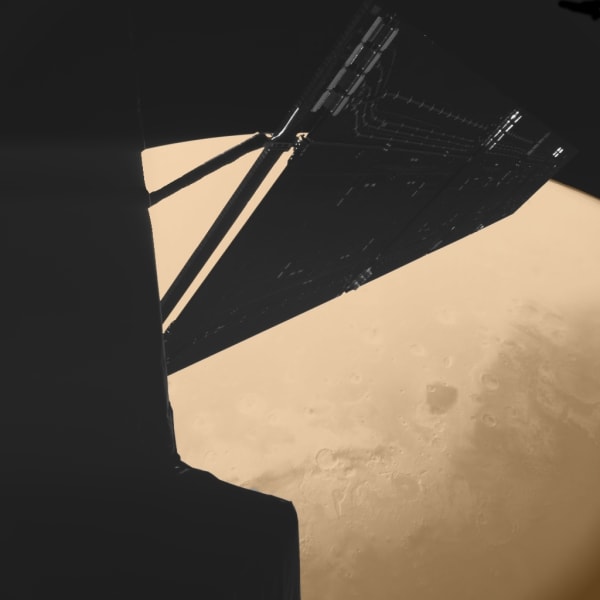Share
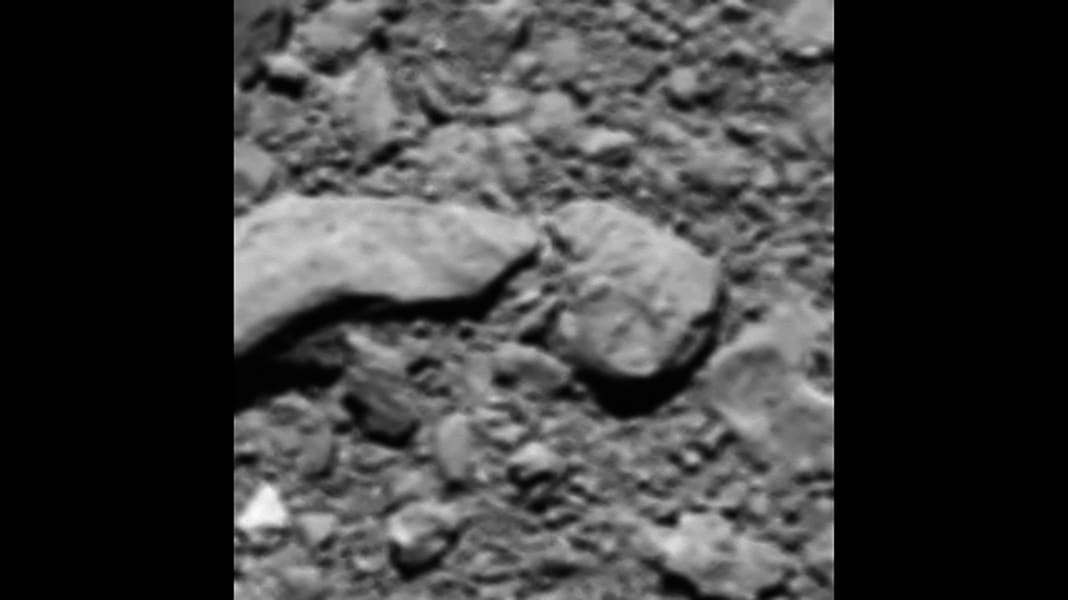

1 of 40
The Rosetta probe sent an unexpected final image back to Earth shortly before it made a controlled impact onto the surface of Comet 67P last September. ESA/Rosetta/MPS for OSIRIS Team
The Rosetta spacecraft's high-resolution camera took this image of the Philae lander on September 2, 2016. The lander is wedged into a dark crack on a comet, named 67P/Churyumov--Gerasimenko, hurtling through space. The discovery comes less than a month before the Rosetta mission's end. ESA/Rosetta/MPS for OSIRIS Team
"We are so happy to have finally imaged Philae, and to see it in such amazing detail," says Cecilia Tubiana of the OSIRIS camera team. She was the first person to see the images when they were downlinked from the Rosetta probe, according to the European Space Agency. ESA/Rosetta/MPS for OSIRIS Team
The image is detailed enough that viewers can pick out features of Philae's 3-foot-wide (1 meter) body. Even two of its three legs can be seen. ESA/Rosetta/MPS for OSIRIS Team
One of the primary objectives of the Rosetta mission was to drop the Philae lander onto the comet. The probe was successfully deployed in November 2014, becoming the first probe to land on a comet. But Philae failed to grab onto the comet and bounced around. It fell silent a few days later. Then on June 13, 2015, Philae came out of hibernation and "spoke" to mission managers at the European Space Agency for 85 seconds. This photo above was taken by the lander's mothership, the Rosetta orbiter, after the lander started its descent to the comet. ESA/Rosetta/MPS for OSIRIS Team
The Rosetta spacecraft captured this image of a jet of white debris spraying from Comet 67P/Churyumov--Gerasimenko on July 29, 2015. Mission scientists said this was the brightest jet seen to date in the mission. The debris is mostly of ice coated with dark organic material. ESA/Rosetta/MPS for OSIRIS Team MPS/UPD/LAM/IAA/SSO/INTA/UPM/DASP/IDA
This image of Comet 67P/Churyumov-Gerasimenko was taken by Rosetta on July 8, 2015 as the spacecraft and comet headed toward their closest approach to the sun. Rosetta was about 125 miles (201 kilometers) from the comet when it took this image. Rosetta/Navcam/ESA
Philae wakes up! Mission managers posted this cartoon of the lander yawning after it came out of hibernation on June 13, 2015. They also sent a series of tweets between the lander and its mothership, Rosetta. ESA
Comet 67P/Churyumov-Gerasimenko is a Jupiter-family comet. Its 6.5 year journey around the Sun takes it from just beyond the orbit of Jupiter at its most distant, to between the orbits of Earth and Mars at its closest. The comet hails from the Kuiper Belt, but gravitational perturbations knocked it towards the Sun where interactions with Jupiter's gravity set it on its present-day orbit. Courtesy ESA
This image of Comet 67P/Churyumov-Gerasimenko was taken by Rosetta on June 5, 2015, while the spacecraft was about 129 miles (208 kilometers) from the comet's center. ESA/Rosetta/NavCam
Rosetta's navigation camera took this image of the comet on June 1, 2015. ESA/Rosetta/NavCam
The Rosetta Mission is tracking Comet 67P/Churyumov-Gerasimenko on its orbit around the sun. This image was taken on May 3, 2015 at a distance of about 84 miles (135 km) from the comet's center. Courtesy ESA/Rosetta/NavCam -- CC BY-SA IGO 3.0
This image of Comet 67P/Churyumov-Gerasimenko was taken on April 15, 2015. ESA/Rosetta/NavCam -- CC BY-SA IGO 3.0
Rosetta snapped this wide-angle view of Comet 67P/Churyumov-Gerasimenko in September 2014. Rosetta was about 107 million miles (172 million kilometers) from Earth and about 92 million miles (148 million kilometers) from the sun when the photo was released. ESA/Rosetta
A camera on Rosetta took this picture of Comet 67P/Churyumov-Gerasimenko on November 22, 2014, from a distance of about 19 miles (31 kilometers). The nucleus is deliberately overexposed to reveal jets of material spewing from the comet. The 2.5-mile-wide (4-kilometer) comet has shown a big increase in the amount of water its releasing, according to NASA. The space agency says about 40 ounces (1.2 liters) of water was being sprayed into space every second at the end of August 2014. ESA/Rosetta
Rosetta took this picture of a section of the comet's two lobes from a distance of about 5 miles (8 kilometers) on October 14, 2014. ESA/Rosetta
The Rosetta spacecraft's Philae lander is shown sitting on Comet 67P/Churyumov-Gerasimenko after becoming the first space probe to land on a comet on November 12, 2014. The probe's harpoons failed to fire, and Philae bounced a few times. The lander was able to send back images and data for 57 hours before losing power. ESA/Rosetta
Rosetta's lander, Philae, wasn't able to get a good grip on the comet after it touched down. This mosaic shows Philae's movements as it bounced across the comet. ESA/Rosetta
Philae snapped these images after landing, and mission scientists used them to create a panoramic view of the landing site. A graphic shows where the probe would be sitting in the photograph. ESA/Rosetta
The image of Comet 67P/Churyumov-Gerasimenko was taken by a camera on the Philae lander during its descent to the comet on November 12, 2014. The lander was about 1.9 miles (3 kilometers) from the surface at the time. Philae touched down on the comet about seven hours later. ESA/Rosetta/Philae/
Rosetta's OSIRIS camera captured this parting shot of the Philae lander after separation. ESA/Rosetta/MPS for OSIRIS Team
Rosetta's lander Philae took this parting shot of its mother ship shortly after separation on November 12, 2014, as Philae headed for a landing on Comet 67P. While Philae is the first probe to land on a comet, Rosetta is the first to rendezvous with a comet and follow it around the sun. ESA/Rosetta/Philae/CIVA
This mosaic is made of four individual images taken about 20 miles (31.8 kilometers ) from the center of the comet on November 4, 2014. ESA/Rosetta/NAVCAM
Rosetta took this image of comet 67P/Churyumov-Gerasimenko on September 15, 2014. The box on the right shows where the lander was expected to touch down. ESA/Rosetta
The spacecraft sent this image as it approached the comet on August 6, 2014. From a distance of nearly 81 miles (130 kilometers), it reveals detail of the smooth region on the comet's "body" section. ESA/Rosetta/MPS for OSIRIS Team MPS/UPD/LAM/IAA/SSO/INTA/UPM/DASP/IDA
This image, captured August 7, 2014, shows the diversity of surface structures on the comet's nucleus. ESA/Rosetta/NAVCAM
The comet's "head" can be seen in the left of the frame as it casts a shadow over the "body" in this image released August 6, 2014. ESA/Rosetta/MPS for OSIRIS Team MPS/UPD/LAM/IAA/SSO/INTA/UPM/DASP/IDA
This image of the comet was taken on August 1, 2014, as Rosetta closed in its target. ESA/Rosetta/MPS for OSIRIS Team MPS/UPD/LAM/IAA/SSO/INTA/UPM/DASP/IDA
Rosetta's mission started on March 2, 2004, when it was launched on a European Ariane 5 rocket from Kourou, French Guiana. ESA/CNES/ARIANESPACE
Rosetta is named after the Rosetta Stone, the black basalt that provided the key to deciphering Egyptian hieroglyphs. Scientists think the mission will give them new clues about the origins of the solar system and life on Earth. The mission is spearheaded by the European Space Agency with key support from NASA.
This photo shows Rosetta being tested before it was wrapped in insulating blankets and loaded on a rocket for launch. ESA/A.Van Der Geest
Rosetta has massive solar wings to power the spacecraft. They were unfurled and checked out at the European Space Agency's test facilities before being packed up for liftoff. ESA
After its closest approach to Earth in November 2007, Rosetta captured this image of the planet. ESA
Rosetta snapped this image of Earth in November 2009. The spacecraft was 393,328 miles from Earth. ESA
Rosetta passed asteroid Steins in September 2008, giving scientists amazing close-ups of the asteroid's huge crater. The asteroid is about 3 miles in diameter. ESA
Rosetta took this image of Mars as it looped through the solar system. ESA © 2007 MPS for OSIRIS Team MPS/UPD/ LAM/IAA/ RSSD/ INTA/ UPM/ DASP/ IDA
This image was taken by an instrument on Rosetta's Philae lander just minutes before the spacecraft made its closest approach to Mars. Part of Rosetta and its solar arrays are visible. ESA
On July 10, 2010, Rosetta flew about 1,864 miles from asteroid Lutetia, which is 10 times larger than asteroid Steins. ESA
Look closely at the top of this picture. See that dot? That's Saturn. Rosetta snapped the picture of asteroid Lutetia and captured Saturn in the background. ESA
After taking pictures of Earth, Mars and asteroids, Rosetta was put into hibernation in May 2011 after it reached the outer part of the solar system. Mission managers woke it January 20, 2014. ESA
